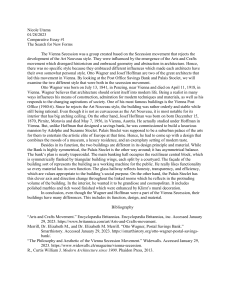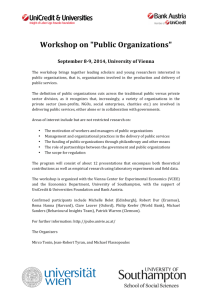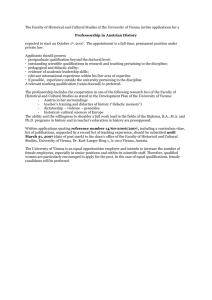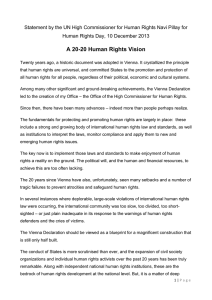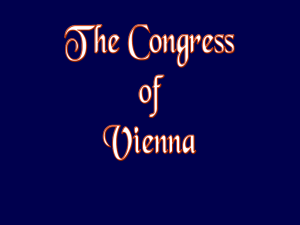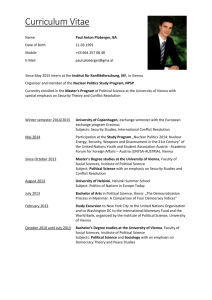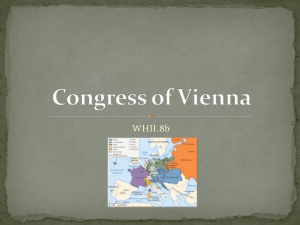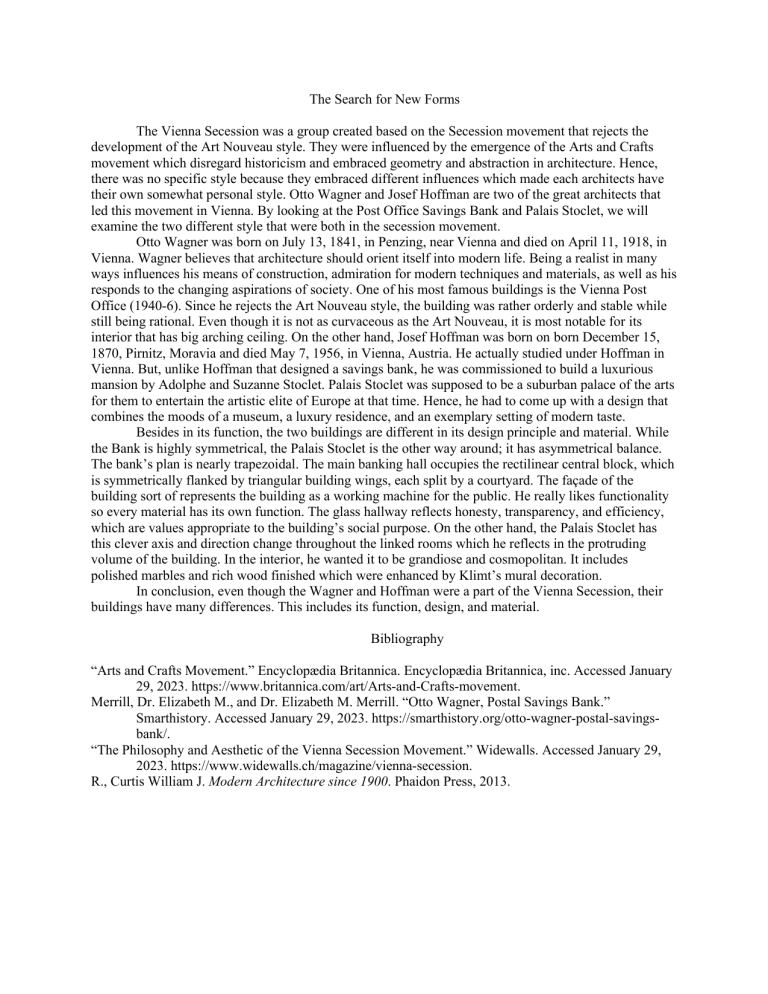
The Search for New Forms The Vienna Secession was a group created based on the Secession movement that rejects the development of the Art Nouveau style. They were influenced by the emergence of the Arts and Crafts movement which disregard historicism and embraced geometry and abstraction in architecture. Hence, there was no specific style because they embraced different influences which made each architects have their own somewhat personal style. Otto Wagner and Josef Hoffman are two of the great architects that led this movement in Vienna. By looking at the Post Office Savings Bank and Palais Stoclet, we will examine the two different style that were both in the secession movement. Otto Wagner was born on July 13, 1841, in Penzing, near Vienna and died on April 11, 1918, in Vienna. Wagner believes that architecture should orient itself into modern life. Being a realist in many ways influences his means of construction, admiration for modern techniques and materials, as well as his responds to the changing aspirations of society. One of his most famous buildings is the Vienna Post Office (1940-6). Since he rejects the Art Nouveau style, the building was rather orderly and stable while still being rational. Even though it is not as curvaceous as the Art Nouveau, it is most notable for its interior that has big arching ceiling. On the other hand, Josef Hoffman was born on born December 15, 1870, Pirnitz, Moravia and died May 7, 1956, in Vienna, Austria. He actually studied under Hoffman in Vienna. But, unlike Hoffman that designed a savings bank, he was commissioned to build a luxurious mansion by Adolphe and Suzanne Stoclet. Palais Stoclet was supposed to be a suburban palace of the arts for them to entertain the artistic elite of Europe at that time. Hence, he had to come up with a design that combines the moods of a museum, a luxury residence, and an exemplary setting of modern taste. Besides in its function, the two buildings are different in its design principle and material. While the Bank is highly symmetrical, the Palais Stoclet is the other way around; it has asymmetrical balance. The bank’s plan is nearly trapezoidal. The main banking hall occupies the rectilinear central block, which is symmetrically flanked by triangular building wings, each split by a courtyard. The façade of the building sort of represents the building as a working machine for the public. He really likes functionality so every material has its own function. The glass hallway reflects honesty, transparency, and efficiency, which are values appropriate to the building’s social purpose. On the other hand, the Palais Stoclet has this clever axis and direction change throughout the linked rooms which he reflects in the protruding volume of the building. In the interior, he wanted it to be grandiose and cosmopolitan. It includes polished marbles and rich wood finished which were enhanced by Klimt’s mural decoration. In conclusion, even though the Wagner and Hoffman were a part of the Vienna Secession, their buildings have many differences. This includes its function, design, and material. Bibliography “Arts and Crafts Movement.” Encyclopædia Britannica. Encyclopædia Britannica, inc. Accessed January 29, 2023. https://www.britannica.com/art/Arts-and-Crafts-movement. Merrill, Dr. Elizabeth M., and Dr. Elizabeth M. Merrill. “Otto Wagner, Postal Savings Bank.” Smarthistory. Accessed January 29, 2023. https://smarthistory.org/otto-wagner-postal-savingsbank/. “The Philosophy and Aesthetic of the Vienna Secession Movement.” Widewalls. Accessed January 29, 2023. https://www.widewalls.ch/magazine/vienna-secession. R., Curtis William J. Modern Architecture since 1900. Phaidon Press, 2013.
